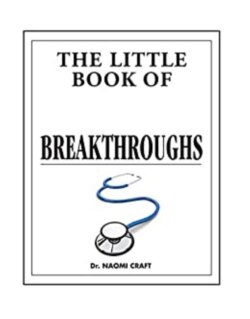Читать книгу The Little Book of Medical Breakthroughs - Dr. Naomi Craft - Страница 23
На сайте Литреса книга снята с продажи.
1816 France The Stethoscope René-Théophile-Hyacinthe Laënnec (1781–1826)
ОглавлениеLaënnec’s invention marked the beginning of a new era in the ability to diagnose disease.
Until the 19th century doctors had to rely on the description of symptoms given by the patient and examination of the external body alone. The stethoscope enabled doctors to get more objective information about the internal body.
Laënnec was a highly respected French doctor who at the time of his discovery was chief of the Necker Hospital in Paris. He first wrote about the concept of the stethoscope and how he used it to examine a young woman consulting him with symptoms of heart disease in 1816:
I recalled a well-known acoustic phenomenon: namely, if you place your ear against one end of a wooden beam, the scratch of a pin at the other extremity is distinctly audible. It occurred to me that this physical property might serve a useful purpose in the case with which I was then dealing. Taking a sheet of paper I rolled it into a very tight roll, one end of which I placed on the precordial region, whilst I put my ear to the other. I was both surprised and gratified at being able to hear the beating of the heart with much greater clearness and distinctness than I had ever before by direct application of my ear.
The first stethoscope was made of wood and for one ear only. It was 23cm/9in. long and 4cm/1½ in. in diameter, made out of two pieces screwed together with detachable ear and chest pieces. Using this instrument it was possible to distinguish between different types of breath and heart sounds. Doctors were now able to accurately diagnose conditions such as pneumonia and tuberculosis.
Later modifications to Laënnec’s invention included rubber tubing. In 1852 George Cammann (1804–1863), an American doctor, created the stethoscope that any patient would recognize today.
Laënnec published details of his discovery in 1819, in his Traité de l’Auscultation Médiate. News of the discovery spread fast, incorporated even in Middlemarch (1871–1872) by celebrated English novelist George Eliot (pseudonym of Mary Anne Evans, 1819– 1880). In the book Tertius Lydgate, just back from his medical training in Paris, describes the new invention to sceptical older colleagues.
Laennec’s stethoscope from De l’Auscultation Mediate (1819). Figure (1) Instrument assembled Figures (2) & (3) Two forms of the instrument in longitudinal section Figure (4) Detachable chest piece Figure (5) Ear piece unscrewed Figure (6) Transverse section
